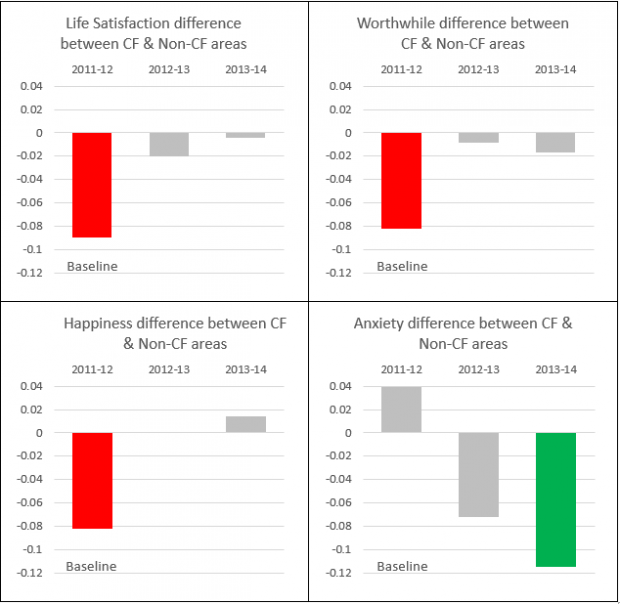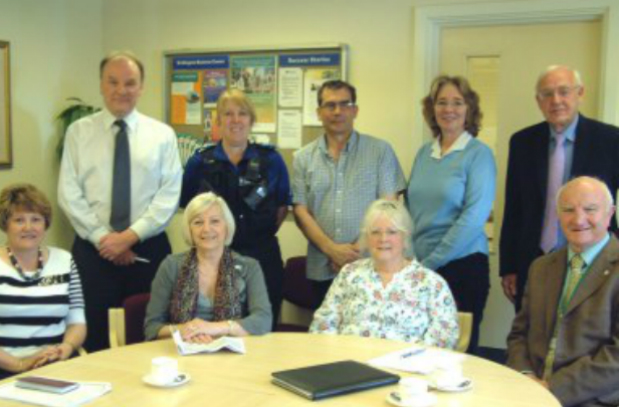Our previous blog on the Community First (CF) Neighbourhood Fund programme highlighted why we might expect to see community well-being and volunteering increase within areas in which projects have run. But has this actually happened?
To test the evidence we have analysed three years of national well-being data assembled by ONS and have compared people who responded to the survey living in project areas with those living in comparably deprived non-project areas. For this analysis we had a good working sample of around 77,000 completed survey responses of which around 32,000 were from within Community First wards, before and during implementation of projects.
We find that personal well-being has increased over the period in project and non-project areas. Interestingly though, well-being among project areas started from a lower base than comparable non-project areas but the gap has closed over the three year period. We have tested these results to ensure the differences are not explained by local population differences and the results still hold true – Community First (CF) areas started with significantly lower well-being and after three years have caught up. The results are illustrated in the chart below.
The observed differences in well-being are relatively small – of the order of 0.08 to 0.12 on a 10 point scale. However, personal well-being differences do tend to be small across a range of factors. To put them into context, for life satisfaction the same models measured differences between religious and non-religious respondents as 0.12 and between men and women as 0.15.

Volunteering has also increased
We have also analysed results from the Community Life Survey and its predecessor, the Citizenship Survey. Similar to above, we compared people living in project areas with those living in comparably deprived non-project areas across three survey years – before and during project activity. We found that the proportion of people volunteering in Community First areas is currently significantly higher than in other non-project areas (82% vs. 66%). The volunteering rate started off lower in 2010-11, reaching similar levels in 2012-13 and ended up higher in 2013-14.

Encouraging results and also an efficient approach to informing impact evaluations
So these are encouraging results – given that they are derived from different national surveys which are independent of each other and of the programme itself. However it is important to note that from this type of analysis we cannot demonstrate causality i.e. that Community First projects were directly responsible for the uplifts in well-being and volunteering. In isolation the results are clearly weaker than running dedicated before, during and after surveys in project and selected control areas – but such an approach would be prohibitively expensive for such a large national project. But the results are not isolated; they complement other evidence such a: monitoring forms which report total volunteering hours for each project; surveys of project leaders who say their projects focus on well-being; and analysis of the types of project being implemented which we would expect to boost quality of life.
Supportive evidence that Community First has been promoting fulfilling and good lives
Taken as a whole the evidence is indicating that this small grants programme run predominantly by communities, for communities around their local priorities, and with matched commitments of local assets and resources, has contributed to higher volunteering rates and has supported well-being.
Promoting community action and delegating power and resources to communities are practical ways we can support people to live fulfilling and good lives.
Have you been involved in Community First projects? And if so, how has your well-being improved as a result? Whether or not you've been involved, please share your views on the programme and/or the results of our analysis of it below.

Recent Comments